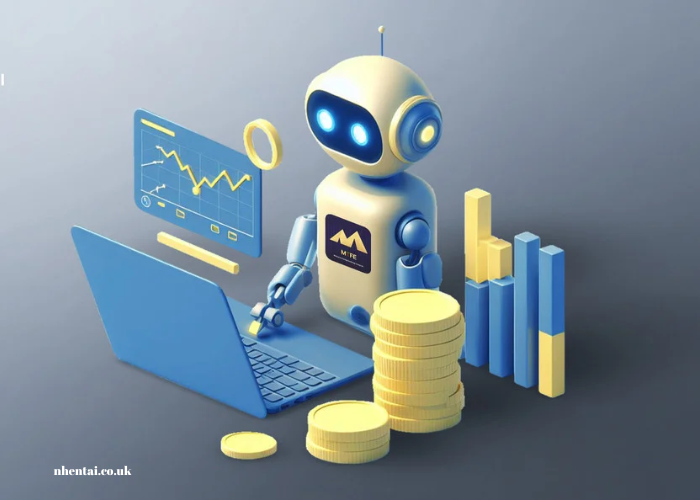The Role of Pattern Recognition in Identifying Opportunities for Forex Robot Trading
In the realm of foreign exchange (Forex) trading, where market dynamics can change in the blink of an eye, identifying profitable opportunities is essential for success. Pattern recognition, a fundamental aspect of technical analysis, plays a pivotal role in helping Forex traders spot recurring patterns and trends in market data. In this article, we explore the significance of pattern recognition in identifying opportunities for Forex robot trading, highlighting how these automated systems leverage advanced algorithms to detect patterns and execute trades with precision.
Understanding Pattern Recognition
Pattern recognition is the process of identifying recurring patterns, trends, and relationships within data. In the context of Forex trading, pattern recognition involves analyzing historical price data, chart patterns, and technical indicators to identify potential trading opportunities.
Traders use various techniques and tools to recognize patterns, including visual inspection of price charts, mathematical algorithms, and machine learning models. Common patterns studied in Forex trading include trend patterns (such as uptrends and downtrends), reversal patterns (such as head and shoulders, double tops, and double bottoms), and continuation patterns (such as flags, pennants, and triangles).
The Role of Pattern Recognition in Forex Trading
Pattern recognition plays a crucial role in Forex trading by providing traders with valuable insights into market dynamics and potential price movements. By identifying patterns and trends in market data, traders can make more informed trading decisions and capitalize on profitable opportunities.
In manual trading, traders often rely on their expertise and intuition to recognize patterns and interpret their significance. However, with the advent of Forex robots, pattern recognition can now be automated using sophisticated algorithms and machine learning techniques.
Leveraging Advanced Algorithms
Forex robots leverage advanced algorithms to automate the process of pattern recognition and trading. These algorithms analyze vast amounts of historical market data, identify patterns and trends, and generate trading signals based on predefined criteria and rules.
Machine learning algorithms, such as support vector machines (SVM), random forests, and neural networks, are commonly used in Forex robot trading to identify complex patterns and relationships within the data. By continuously learning from past data and adapting to changing market conditions, these algorithms can improve their accuracy and effectiveness over time.
Detecting Patterns in Real-Time
One of the key advantages of Forex robots is their ability to detect patterns in real-time and execute trades automatically. Unlike human traders, who may miss opportunities or make errors due to fatigue or emotional biases, Forex robots can analyze market data 24/7 and act on trading signals with speed and precision.
Moreover, Forex robots can monitor multiple currency pairs simultaneously and identify patterns across different timeframes, enabling traders to diversify their trading strategies and capitalize on opportunities in various market conditions.
Implementing Trading Strategies
Pattern recognition is integrated into the trading strategies implemented by Forex robots. For example, trend-following strategies may rely on identifying patterns such as moving average crossovers or breakout patterns to enter trades in the direction of the trend. Conversely, mean-reversion strategies may look for patterns indicating overbought or oversold conditions to enter contrarian trades.
Furthermore, pattern recognition algorithms can be combined with other technical indicators, such as oscillators, volume analysis, and support and resistance levels, to confirm trading signals and filter out false positives.
Challenges and Considerations
While pattern recognition is a powerful tool for identifying opportunities in Forex trading, it is not without its challenges and considerations. Firstly, the effectiveness of pattern recognition algorithms depends on the quality and relevance of the data. Traders must ensure that their algorithms are trained on clean, accurate, and representative data to produce reliable results.
Secondly, pattern recognition algorithms may be prone to false signals or misinterpretation of patterns, especially in volatile or unpredictable market conditions. Traders must implement robust risk management strategies to mitigate the risks of false positives and avoid significant losses.
Conclusion
In conclusion, pattern recognition plays a vital role in identifying opportunities for Forex robot trading, enabling traders to spot recurring patterns and trends in market data and capitalize on profitable opportunities. By leveraging advanced algorithms and machine learning techniques, Forex robots can automate the process of pattern recognition and execute trades with precision and speed.
However, realizing the full potential of pattern recognition in Forex trading requires careful consideration of data quality, algorithm accuracy, and risk management strategies. Nonetheless, the integration of pattern recognition into Forex robot trading represents a significant advancement in the field of algorithmic trading, empowering traders to navigate the complexities of the Forex market with confidence and efficiency.














Post Comment